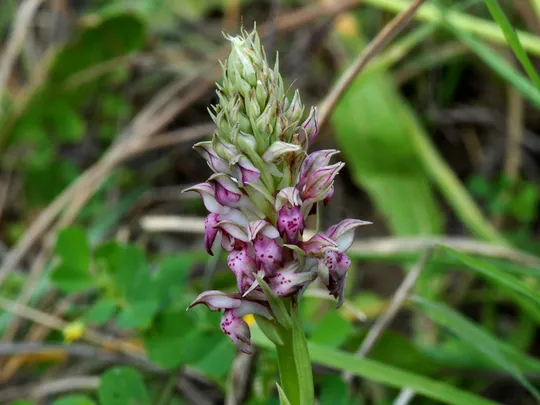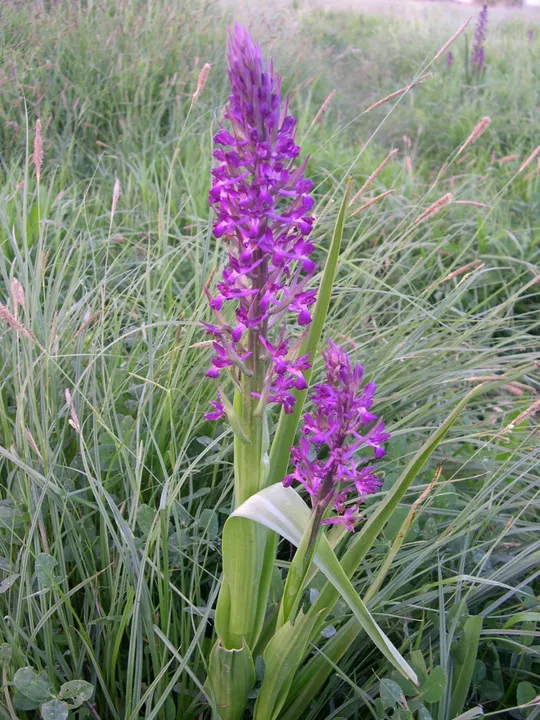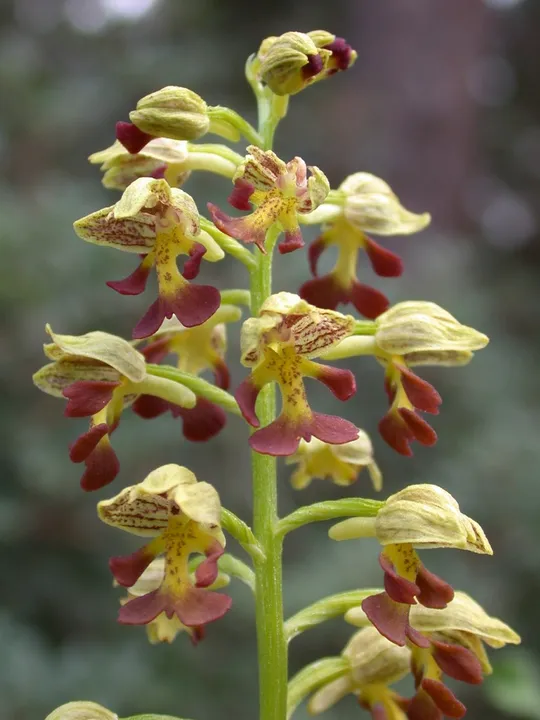Syrian Orchid
Orchis syriaca


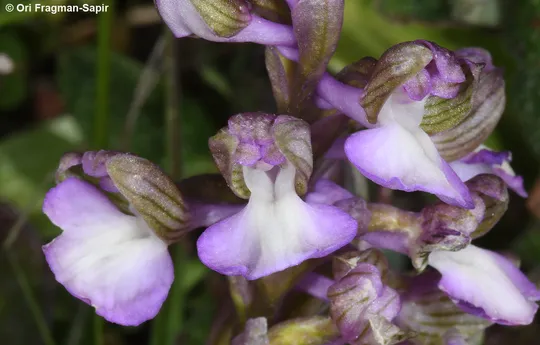
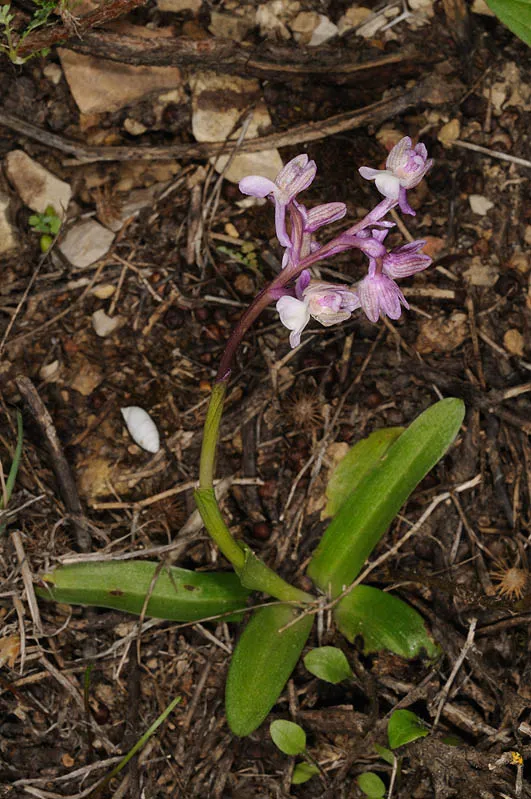
Yair Or discovered Orchis syriaca as a new plant for Israel on Mount Keta on the low Hermon in 1992 and
subsequently it was found at another nearby site.
In Israel – Sarcopoterium spinosum scrubland. In
the world also in Mediterranean shrubland, on the edges of woodlands and
natural and planted Pinus forests. In Cyprus, Orchis syriaca grows in a variety of sunny to semi-shaded habitats from sea level up
to an altitude of 1300 m.
Subsequent to research
and molecular analysis, Orchis
syriaca
along with other Orchis species was transferred to the genus Anacamptis
(Pridgeon et al., 1997). In the new monograph of the genus Orchis and
its relatives an additional molecular analysis is presented that shows that O. syriaca is extremely close to some other species that were all united
under Anacamptis morio. In this
publication O. syriaca is described as Anacamptis morio
ssp. syriaca (Kretzschmar et al 2007). Orchis (Anacamptis) morio is
a widely distributed European species, to which North African, Black Sea and
Caucasus species were also added. Because there is insufficient knowledge regarding
the insect pollinators of these species (including those of O. syriaca) and as there are morphological differences between
them (A. morio is a plant that has a dotted labellum), O. syriaca is considered an independent species in this book.
Additional molecular analyses of the Mount Keta populations in the low Hermon
show that they are actually hybrid forms between O. syriaca and O. caspia (Cozzolino et
al., 2001). In conclusion, it appears that the issue of O. syriaca in Israel is complex, there is a lack of cytological
information on the species and there is no molecular study of the plant
populations in Lebanon and Syria.
Orchis syriaca is the rarest
plant in Israel limited to Mount Keta at the foot of Mount Hermon. At this
point only populations that number a few plants have been found. In Israel, it
is protected by virtue of belonging to the family Orchidaceae, and the site on
Mount Keta is located within the boundaries of the Mount Hermon Reserve that is
not officially declared. Within its global range in the Eastern Mediterranean
region, it is apparently not endangered.
Orchis syriaca should be
tracked and monitored. Systematic research is needed to investigate the precise
identity of the growing population at the foot of Mount Hermon. The development
of the community of Nimrod should be directed to orchard areas and not to
natural areas.
Orchis syriaca grows only in
the eastern Mediterranean: southern Mediterranean Turkey, Cyprus, western
Syria, Lebanon and northern Israel. It is the most common orchid in Cyprus.
Orchis syriaca is a very rare orchid species that grows at the foot of Mount Hermon on two adjacent
sites that constitutes the southern limit of its global distribution. The plants
at this site may be hybrids with O. caspia.
Cozzolino, S., S. Aceto, P. Caputo, A. Widmer & A. Dafni. 2001. Speciation processes in Eastern Mediterranean Orchis s.l. species: Molecular evidence and the role of pollination biology. Israel Journal of Plant Sciences 49:91-103.
Pridgeon, A. M., R. M. Bateman, A. V. Cox, J. R. Hapeman, and M. W. Chase. 1997 Phylogenetics of subtribe Orchidinae (Orchidoideae, Orchidaceae) based on nuclear ITS sequences. 1. Intergeneric relationships and polyphyly of Orchis sensu lato. Lindleyana 12: 89-109.
Krestzschmar, H. Eccarius, W. & Dietrich, H. 2007. The Orchid Genera: Anacampis, Orchis, Neotinea. EchinoMedia 544 pp.
Current Occupancy Map
| 1000 squre meter pixel | 5000 squre meter pixel | 10000 squre meter pixel | |
|---|---|---|---|
| number of observations | 0 | 0 | 0 |
| in total pixels | 0 | 0 | 0 |
| Family | orchidaceae |
| Classification | On the endangered species list |
| Ecosystem | Mediterranean |
| Chorotype | Eastern Mediterranean |
| Conservation Site | Mount Keta |
| Rarity |
1
6
6
|
|---|---|
| Vulnerability |
0
0
4
|
| Attractiveness |
0
1
4
|
| Endemism |
0
0
4
|
| Red number |
1
4.2
10
|
| Peripherality | N |
| IUCN category | DD EW EX LC CR EN VU NT |
| Threat Definition according to the red book | Endangered |
 Based on:
Based on:
